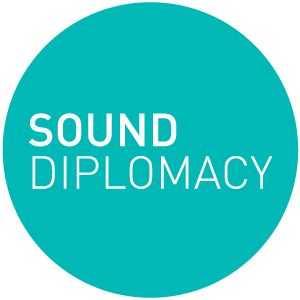The Power of Sound: Rethinking Music in Public Space
When the UK went into lockdown last year, music venues were among the first spaces to close. And they will be among the last to reopen this summer, as the shackles of COVID-19 are gradually lifted.
Yet these months of hibernation have highlighted the value that music has on our lives. Live music may have temporarily stopped, but the buildings that housed sweaty gigs and club sessions remain, eagerly awaiting a safe reopening. New infrastructure is being planned across the UK: arenas in Bristol, Manchester and Cardiff, as well as smaller venues, such as the redevelopment of The Standard in North London. At the same time, the growth in new technologies that bring fans and artists closer together, is changing the demands for space and how we use it to create impactful, meaningful experiences.
The future of how music interacts with, and is best deployed, in the built environment is at a crossroads, presenting a unique opportunity in a post-pandemic world. How we design space - outdoors and in - and how we use music will be a powerful tool in changing our cities, towns and places for the better. This can only happen if we act deliberately, and carefully plan for the future of music in real estate.
Changing regulations
One area of the built environment has already been categorically transformed over the past year – public and privately-owned outdoor spaces. With the COVID-19 transmission rate significantly reduced in outdoor settings, cities around the world have scrambled to reform often outdated and cumbersome permitting and regulatory frameworks, to allow for outdoor dining, the widening of public space and car-free, low traffic neighbourhoods. New York City, for example, reformed its public assembly permitting process to allow more pavements to be converted into restaurant patios, an impossible task before the pandemic.
But this is only the beginning; what if we took the ideas that impact our landscape and applied them as rigorously to our soundscapes as well? I say this because COVID-19 is a case study ion the importance of music and culture to our lives. We have all turned to culture at one point or another, be it streaming Netflix or listening to Spotify. Music consumption increased 8.2% last year in the UK alone.
Room for music
As we emerge from the latest lockdown and while vaccination programmes increase, there will be a growing desire to congregate and host events. Music will feature heavily at most of them. But the regulatory framework needed to incorporate music - especially music and alcohol - remains overburdened and expensive. Licensing frameworks prioritise harm reduction and often overlook music’s role in promoting culture. New public spaces are still not designed to accommodate sound.
What if we implanted noise-limiting speakers into pavements to allow street performers to plug in, or created sunken stages so stairs can be transformed into mini amphitheatres or bandstands? This is an opportunity to reimagine our public spaces so that music, in all its forms and functions, provides the same level of comfort and community as it did when we were locked down. What are we waiting for?
Originally Featured in the U+I Website and Newsletter on Wednesday 14th April 2021

